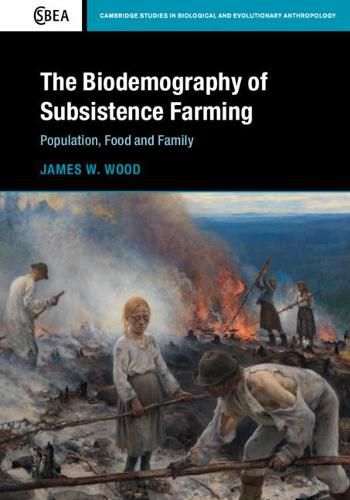Readings Newsletter
Become a Readings Member to make your shopping experience even easier.
Sign in or sign up for free!
You’re not far away from qualifying for FREE standard shipping within Australia
You’ve qualified for FREE standard shipping within Australia
The cart is loading…






Viewing the subsistence farm as primarily a ‘demographic enterprise’ to create and support a family, this book offers an integrated view of the demography and ecology of preindustrial farming. Taking an interdisciplinary perspective, it examines how traditional farming practices interact with demographic processes such as childbearing, death, and family formation. It includes topics such as household nutrition, physiological work capacity, health and resistance to infectious diseases, as well as reproductive performance and mortality. The book argues that the farming household is the most informative scale at which to study the biodemography and physiological ecology of preindustrial, non-commercial agriculture. It offers a balanced appraisal of the farming system, considering its strengths and limitations, as well as the implications of viewing it as a ‘demographic enterprise’ rather than an economic one. A valuable resource for graduate students and researchers in biological and physical anthropology, cultural anthropology, natural resource management, agriculture and ecology.
$9.00 standard shipping within Australia
FREE standard shipping within Australia for orders over $100.00
Express & International shipping calculated at checkout
Viewing the subsistence farm as primarily a ‘demographic enterprise’ to create and support a family, this book offers an integrated view of the demography and ecology of preindustrial farming. Taking an interdisciplinary perspective, it examines how traditional farming practices interact with demographic processes such as childbearing, death, and family formation. It includes topics such as household nutrition, physiological work capacity, health and resistance to infectious diseases, as well as reproductive performance and mortality. The book argues that the farming household is the most informative scale at which to study the biodemography and physiological ecology of preindustrial, non-commercial agriculture. It offers a balanced appraisal of the farming system, considering its strengths and limitations, as well as the implications of viewing it as a ‘demographic enterprise’ rather than an economic one. A valuable resource for graduate students and researchers in biological and physical anthropology, cultural anthropology, natural resource management, agriculture and ecology.